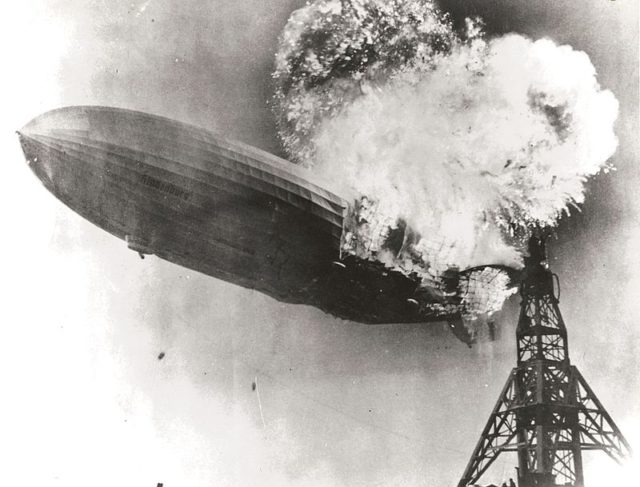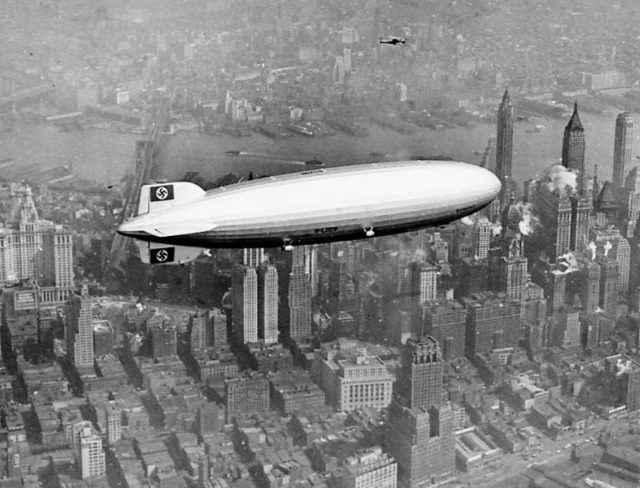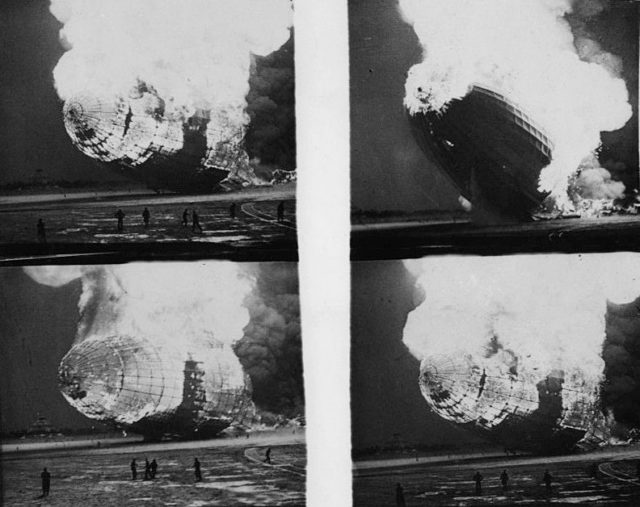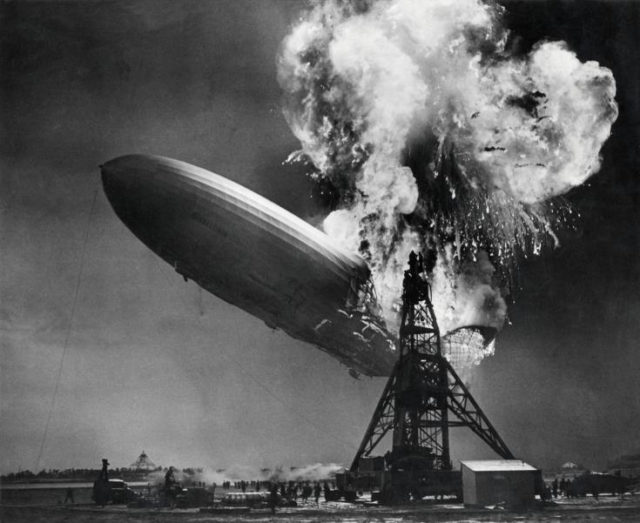On 6 May 1937, when the German passenger airship LZ 129 Hindenburg approached the landing area and lowered its linings, disaster struck.
The ship caught fire and was destroyed in a large inferno within half a minute.
At the Naval Air Station Lakehurst in Manchester Township, New Jersey US, the airship was going through normal landing procedures, but began struggling just before it dropped its linings for the final stage of landing.

Of the 97 people on board the ship, 35 passengers and one crewman on the ground were killed in the fire. The ship burned to ashes in only 30 seconds. A number of newsreel companies had been present on site to capture the landing of the giant airship but instead documented its destruction.
Perhaps the most famous of all newsreel footage was shot by cameraman William Deeke, and shows the Hindenburg making a final sharp turn to starboard while dropping three separate ballast before finally lowering the landing lines.

Second only to the sinking of the Titanic, the Hindenburg fire was one of the most prominent disasters of its time and in its immediate aftermath, a number of conspiracy theories emerged once news of the tragedy reached the wider public.
The loss of such a prominent Nazi vessel emblazoned with large Swastikas during a time of mounting tensions before the Second World War has fueled the imaginations and suspicions of conspiracy theorists to this day.
One of the most prominent ideas surrounding the disaster suggests that the airship was brought down deliberately by US military aircraft in order to damage Nazi Germany’s industrial capabilities.
Proponents of this story question why none of the footage capturing the disaster shows the precise moment when the fire was triggered, but start only once the ship was engulfed by flames.
Other theories suggest that angry farmers were the cause of the crash. Resentful of the giant Nazi airship flying over their homes and land, some farmers were reported to have shot towards the airships. If so, it is possible that a bullet from one of the local farmers’ guns may have triggered the fire that engulfed the Hindenburg.

Despite the fact that Zeppelins had a very good reputation in terms of passenger safety, the fact that they were kept buoyant by large amounts of hydrogen gas as fuel on board always kept the manufacturers and travelers on the edge, purely because hydrogen is highly explosive gas and could be potentially dangerous mid-air.

Perhaps the most plausible of the theories surrounding the tragedy suggests that a mechanical fault or a static shock from the ship’s gas bag or landing lines generated a spark that ignited the hydrogen inside the airship. Critics of this theory point out that the landing lines were made from non-conductive material. But a spark could have been generated by other means, so the possibility still remains.
The day of the fire was a stormy one and ship traveled through areas of high humidity. The fire could have been caused by a lightning strike or static charge from the air, and the conductivity of the spark then increased by the moisture in the air. The weather is another likely culprit in the Hindenberg disaster.
